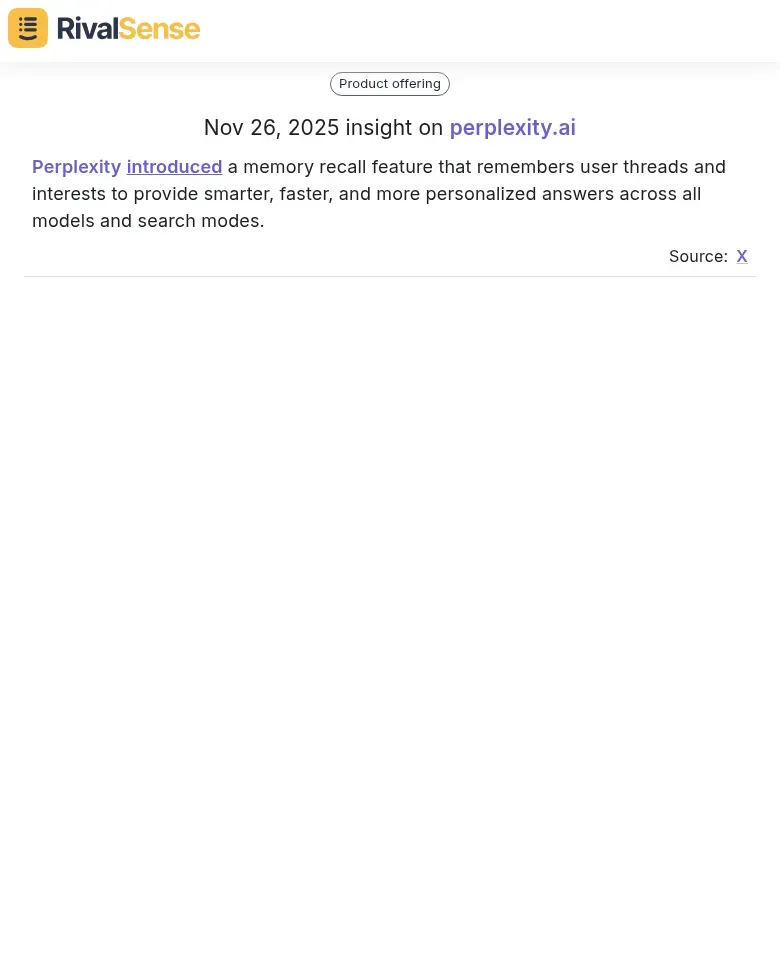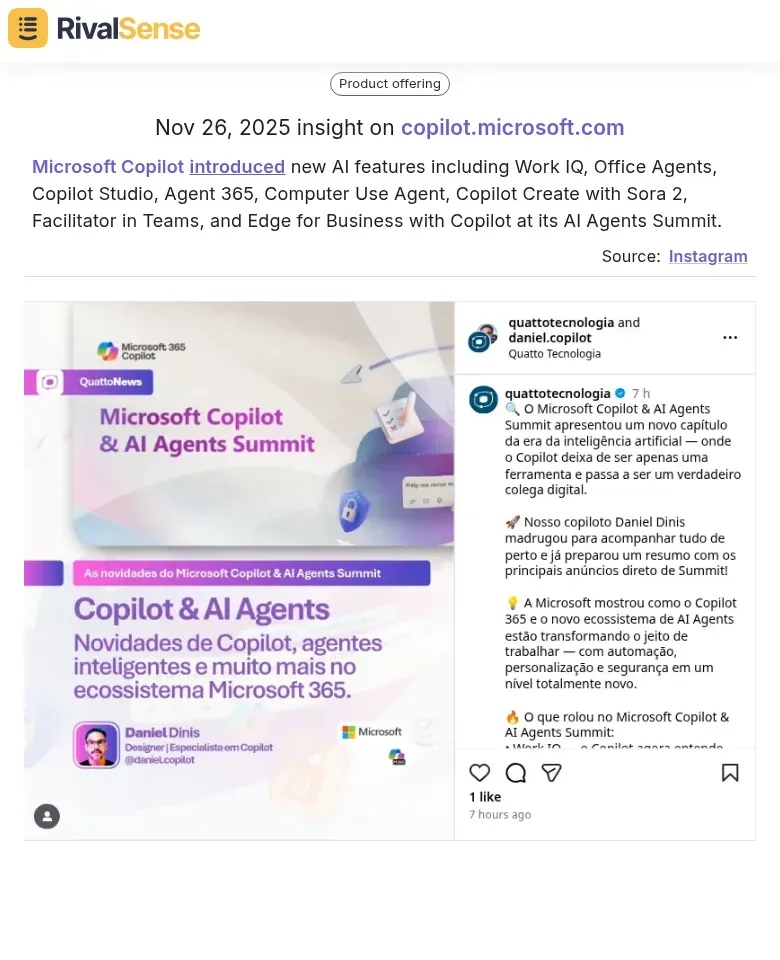Advanced Tactics to Track Competitor Content Performance in Influencer Marketing
Competitor content tracking in influencer marketing is a strategic practice that involves systematically monitoring and analyzing your rivals' influencer collaborations, content strategies, and performance metrics. For B2B founders and CEOs, this approach is essential because it turns raw data into actionable intelligence, helping you uncover which influencers drive real engagement and what content resonates with your target audience. By keeping a close eye on competitor activities, you can identify emerging trends, such as shifts toward thought leadership or new content formats, and adjust your strategy accordingly.
For instance, if multiple competitors are partnering with niche experts on LinkedIn, it might indicate a move toward more authentic, value-driven content. Similarly, analyzing engagement rates on rival posts can reveal what topics or formats—like webinars or case studies—captivate your shared market. Use this intelligence to refine your influencer selections, avoid costly mistakes, and seize opportunities they might have missed.
🔍 Practical Steps to Get Started:
- Identify key competitors and their top influencers using tools like RivalSense.
- Monitor metrics such as engagement rates, shares, and lead generation from their content.
- Analyze content themes and formats quarterly to spot trends.
💡 Tip: Focus on competitors who target similar buyer personas—their successes and failures offer direct insights for your own campaigns.
Identifying Key Competitors and Influencers to Monitor
To build an effective tracking system, begin by identifying both direct competitors (those offering similar products or services) and indirect ones (targeting the same audience with different solutions). This broad approach ensures you capture a full picture of the competitive landscape and don't overlook potential threats or opportunities. Using specialized tools can streamline this process by automatically scanning social media, blogs, and other channels for relevant activity.
Once you've listed your competitors, dive into their influencer partnerships to identify key collaborators. Look for recurring names, high-engagement posts, and audience overlap to prioritize who to monitor. Assessing influencers based on criteria like niche alignment, authenticity, follower demographics, and past campaign success will help you focus on those with the highest potential impact.
📋 Checklist for Identifying and Prioritizing:
- Compile a list of 5–10 top competitors using industry reports and social media analysis.
- Use tools like RivalSense to track their influencer campaigns and identify frequent collaborators.
- Evaluate influencers with: ✅ Niche alignment, ✅ Audience quality, ✅ Content style, ✅ Historical performance.
- Prioritize monitoring for competitors showing high-growth trends and influencers with proven ROI.
🚀 Pro Tip: Micro-influencers often deliver higher engagement and cost-effectiveness in niche B2B markets, so don't overlook them in your analysis.
Metrics and KPIs for Measuring Competitor Content Performance
Measuring competitor content performance requires a focus on key metrics that align with your business goals. Essential metrics include engagement rates (such as likes, comments, and shares per post), reach (unique viewers), and conversion indicators like click-through rates or promo code usage. Advanced KPIs, such as sentiment analysis and share of voice, provide deeper insights into how audiences perceive competitor campaigns and where your brand stands in the conversation.
Benchmarking your performance against industry averages and competitor data is crucial for setting realistic targets and identifying gaps. By regularly reviewing these metrics, you can adapt quickly to market changes and optimize your strategies for better results.
📊 Key Metrics to Track:
| Metric | Why It Matters |
|---|---|
| Engagement Rate | Measures interaction quality and content resonance. |
| Reach | Indicates potential audience size and campaign visibility. |
| Conversion Rate | Tracks actions driven by influencer content, like sign-ups or sales. |
| Sentiment Analysis | Gauges audience emotions toward competitor campaigns. |
🛠️ Actionable Steps:
- Use analytics tools to monitor real-time data on competitor campaigns.
- Set up alerts for new competitor influencer partnerships or content launches.
- Create a dashboard to visualize KPIs and track progress over time.
- Conduct quarterly reviews to adjust strategies based on benchmark comparisons.
💬 Remember: Combine quantitative data with qualitative insights—like audience comments—for a holistic view of performance.
Tools and Technologies for Effective Competitor Tracking
Leveraging the right tools is critical for efficient and accurate competitor tracking in influencer marketing. Platforms like RivalSense automate monitoring across social channels, blogs, and video platforms, providing real-time alerts and detailed analytics on competitor activities. These tools help you stay updated without manual effort, allowing you to focus on strategy and execution.
For example, RivalSense tracks a wide range of competitor movements, from product launches to partnerships, giving you a comprehensive view of their strategies. Here are some real insights that demonstrate the value of such tracking for business strategy:
-
Perplexity's Memory Recall Feature:

Perplexity introduced a memory recall feature that remembers user threads and interests to provide smarter, faster, and more personalized answers. Tracking such product updates is valuable because it reveals innovation trends and helps you anticipate shifts in customer expectations, allowing you to adapt your offerings or messaging proactively. -
Starship Technologies' Wireless Charger Installation:

Starship Technologies' UK Operations Manager announced the installation of its first wireless charger in Leeds, enabling hot food deliveries for Uber Eats. Monitoring operational updates like this is crucial for understanding partnership expansions and logistical advancements, which can inform your own collaboration strategies or service improvements. -
Microsoft Copilot's AI Features at AI Agents Summit:

Microsoft Copilot unveiled new AI features, including Work IQ and Copilot Studio, at its AI Agents Summit. Keeping tabs on event participations and feature launches helps you spot industry movements and emerging technologies, enabling you to align your product development or marketing efforts with market demands.
🔧 How to Integrate Tools into Your Workflow:
- Create a centralized dashboard to track multiple competitors and their influencer campaigns.
- Schedule weekly reviews of analytics to identify trends and anomalies.
- Export data for in-depth analysis and team discussions.
📌 Best Practices Checklist:
- Define key metrics aligned with your goals.
- Automate data collection to save time and reduce errors.
- Share insights across teams to foster agile decision-making.
Analyzing and Interpreting Competitor Data for Strategic Insights
Analyzing competitor data goes beyond just collecting numbers—it's about interpreting patterns to derive strategic insights. Start by examining key metrics like engagement rates, audience sentiment, and conversion data across different platforms. Look for consistent themes in what works, such as certain content formats (e.g., video reels or educational posts) that generate high interaction, and identify any weaknesses in competitor approaches.
Conducting a SWOT analysis (Strengths, Weaknesses, Opportunities, Threats) based on this data can highlight where you can outperform rivals. For instance, if a competitor's case-study videos with mid-tier influencers are successful, you might replicate this but add unique elements like live Q&A sessions to enhance engagement.
📈 Case Example: A B2B SaaS company noticed competitors gaining traction with influencer-led tutorial videos. By adapting this strategy and incorporating customer testimonials, they boosted their conversion rate by 30%. This shows how benchmarking against competitors can turn their data into a roadmap for your success.
🧩 Steps for Effective Analysis:
- Track and compare engagement metrics across competitor campaigns.
- Identify patterns in content formats and influencer tiers that drive results.
- Use tools like RivalSense to automate data collection and uncover hidden trends.
- Regularly update your analysis to stay responsive to market changes.
🔍 Insight Tip: Always correlate data with external factors—like industry events or seasonality—to understand the full context of competitor moves.
Implementing Findings to Enhance Your Influencer Marketing Strategy
Applying competitor insights to your influencer marketing strategy ensures that your efforts are data-driven and competitive. Begin by analyzing top-performing content themes, formats, and posting schedules from rivals, then adapt these elements to fit your brand while adding unique value. For example, if competitor video tutorials are effective, you might create similar content but include step-by-step guides or interactive features to stand out.
Adjust your influencer partnerships and messaging based on what you've learned. If competitors excel with authentic, story-driven posts, partner with influencers who align with your narrative but emphasize exclusivity or urgency—such as limited-time offers or behind-the-scenes access.
🔄 Iterative Improvement Checklist:
- Identify 3–5 successful competitor campaigns to model.
- Map influencer tiers (e.g., micro vs. macro) and test collaborations.
- A/B test messaging variations (e.g., 'Learn how' vs. 'Shop now') to gauge impact.
- Monitor engagement and conversion metrics to refine approaches.
📅 Ongoing Monitoring: Set up automated tracking for competitor campaigns to quickly note shifts in engagement or new collaborations. Conduct monthly audits of competitor moves and refresh your strategy quarterly to maintain a competitive edge.
🎯 Final Thought: Use these insights not just to copy, but to innovate—adding your unique twist can help you outperform rivals consistently.
Ready to streamline your competitor tracking? Try RivalSense for free and get your first competitor report today to gain actionable insights like the examples above! 🚀
📚 Read more
👉 How Arbonics' Partnership with Isometric Unveiled Competitor Expansion Strategies
👉 2025 Competitor Intelligence Trends for Key Account Growth
👉 AI-Powered Key Account Management: A Step-by-Step Framework
👉 Step-by-Step Guide to Analyzing Competitor Event Participation
👉 Mastering Competitor Analysis: Insights from ImpactEd Group's Initiative
